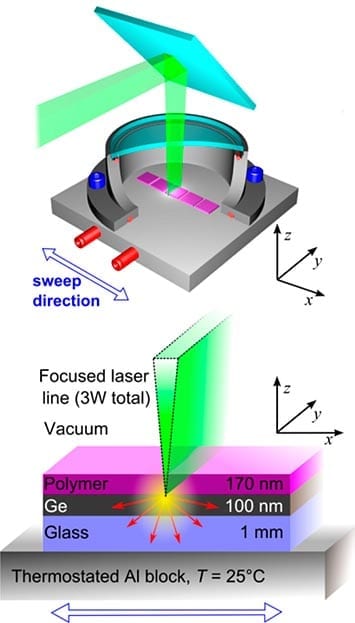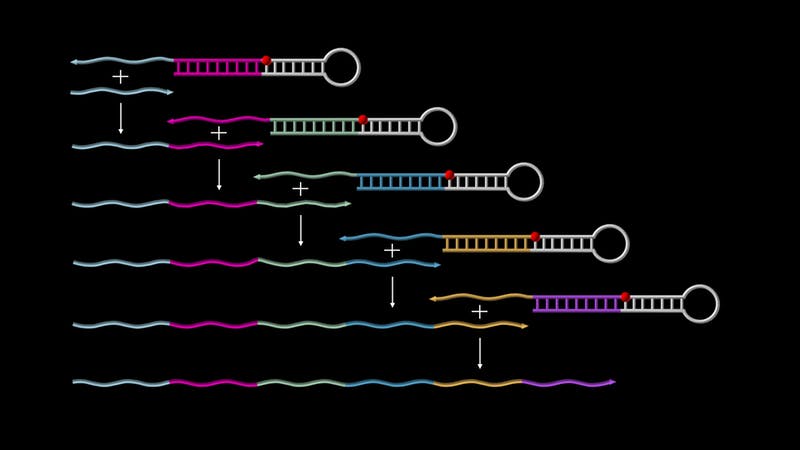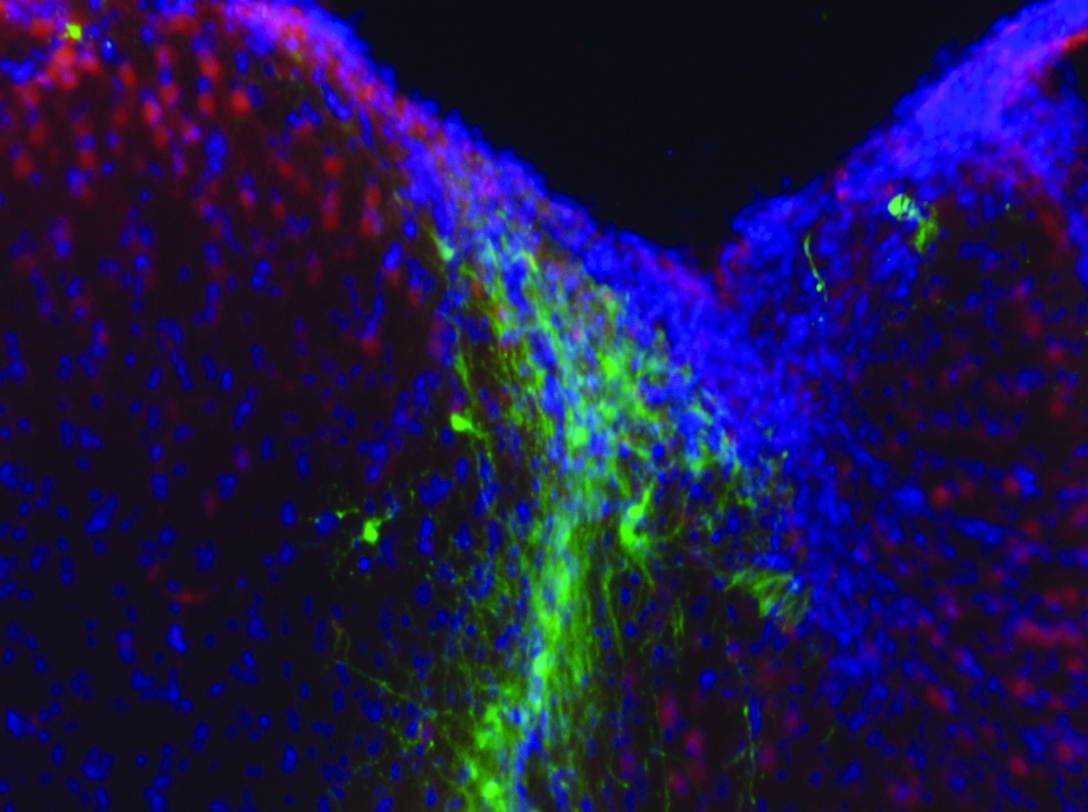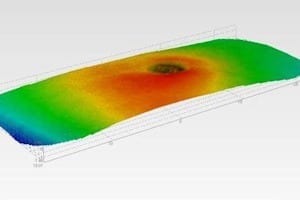
New technique developed at Brookhaven Lab makes self-assembly 1,000 times faster and could be used for industrial-scale solar panels and electronics
Nanoscale materials feature extraordinary, billionth-of-a-meter qualities that transform everything from energy generation to data storage. But while a nanostructured solar cell may be fantastically efficient, that precision is notoriously difficult to achieve on industrial scales. The solution may be self-assembly, or training molecules to stitch themselves together into high-performing configurations.
Now, scientists at the U.S. Department of Energy’s Brookhaven National Laboratory have developed a laser-based technique to execute nanoscale self-assembly with unprecedented ease and efficiency.
“We design materials that build themselves,” said Kevin Yager, a scientist at Brookhaven’s Center for Functional Nanomaterials (CFN). “Under the right conditions, molecules will naturally snap into a perfect configuration. The challenge is giving these nanomaterials the kick they need: the hotter they are, the faster they move around and settle into the desired formation. We used lasers to crank up the heat.”
“We created extremely uniform self-assembled structures in less than a second.”
— Brookhaven Lab postdoctoral researcher Pawel Majewski
Yager and Brookhaven Lab postdoctoral researcher Pawel Majewski built a one-of-a-kind machine that sweeps a focused laser-line across a sample to generate intense and instantaneous spikes in temperature. This new technique, called Laser Zone Annealing (LZA), drives self-assembly at rates more than 1,000 times faster than traditional industrial ovens. The results are described in the journal ACS Nano.
“We created extremely uniform self-assembled structures in less than a second,” Majewski said. “Beyond the extraordinary speed, our laser also reduced the defects and degradations present in oven-heated materials. That combination makes LZA perfect for carrying small-scale laboratory breakthroughs into industry.”
The scientists prepared the materials and built the LZA instrument at the CFN. They then analyzed samples using advanced electron microscopy at CFN and x-ray scattering at Brookhaven’s now-retiredNational Synchrotron Light Source (NSLS)—both DOE Office of Science User Facilities.
“It was enormously gratifying to see that our predictions were accurate—the enormous thermal gradients led to a correspondingly enormous acceleration!” Yager said.
Ovens versus lasers
Read more: Intense Lasers Cook Up Complex, Self-Assembled Nanomaterials
The Latest on: Laser Zone Annealing
[google_news title=”” keyword=”Laser Zone Annealing” num_posts=”10″ blurb_length=”0″ show_thumb=”left”]
via Google News
The Latest on: Laser Zone Annealing
- Veeco lands laser annealing order Ion May 7, 2024 at 11:43 pm
Veeco Instruments says that a leading edge semiconductor company has placed an order for multiple laser annealing systems to accelerate the design and manufacturing of 2-nanometer gate-all-around ...
- Leading Edge Semiconductor Company Places Multi-System Laser Annealing Order Including First Nanosecond Annealing Systemon May 7, 2024 at 2:00 am
PLAINVIEW, N.Y., May 07, 2024 (GLOBE NEWSWIRE) -- Veeco Instruments Inc. (NASDAQ: VECO) announced today that a leading edge semiconductor company has placed an order for multiple laser annealing ...
- Laser light makes a material magneticon April 25, 2024 at 5:00 pm
Pulses of laser light can cause any material – including insulators – to develop a relatively large magnetic moment. This effect, which has been demonstrated for the first time by an international ...
- Best color laser printers for 2024: tested and reviewedon April 11, 2024 at 5:00 pm
The best color laser printers can be a great investment, saving you quite a bit of time and money. For shoppers worried about the long-term ink costs, you'll find color laser printers surprisingly ...
- What Is Laser Hair Removal?on January 18, 2024 at 1:32 pm
Laser hair removal is a non-invasive procedure that uses pulses of concentrated light to remove excess or unwanted hair from the face or body. The treatment is typically performed by a qualified ...
- laser printeron October 22, 2023 at 5:00 pm
Laser printers today are cheap and readily available. But in 1976, they were the height of printing technology. The IBM 3800 was the $175,000 printer to have in that year. (Video, embedded below ...
- laser pointeron December 5, 2022 at 4:00 pm
The videos from [styropyro] are always amusing and informative. However, ironically for him, he is alarmed that many green laser pointers are more powerful than they are supposed to be.
via Bing News










